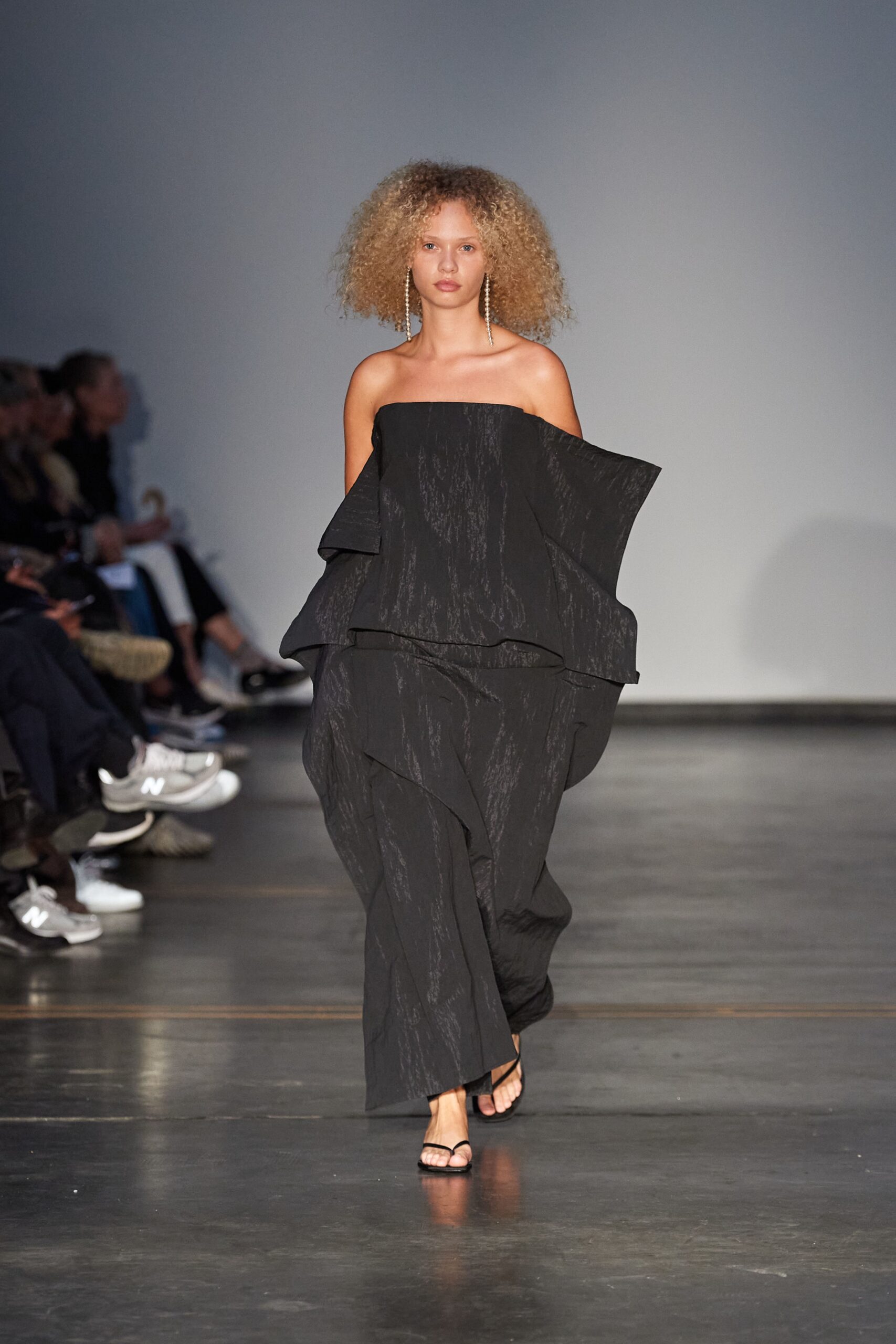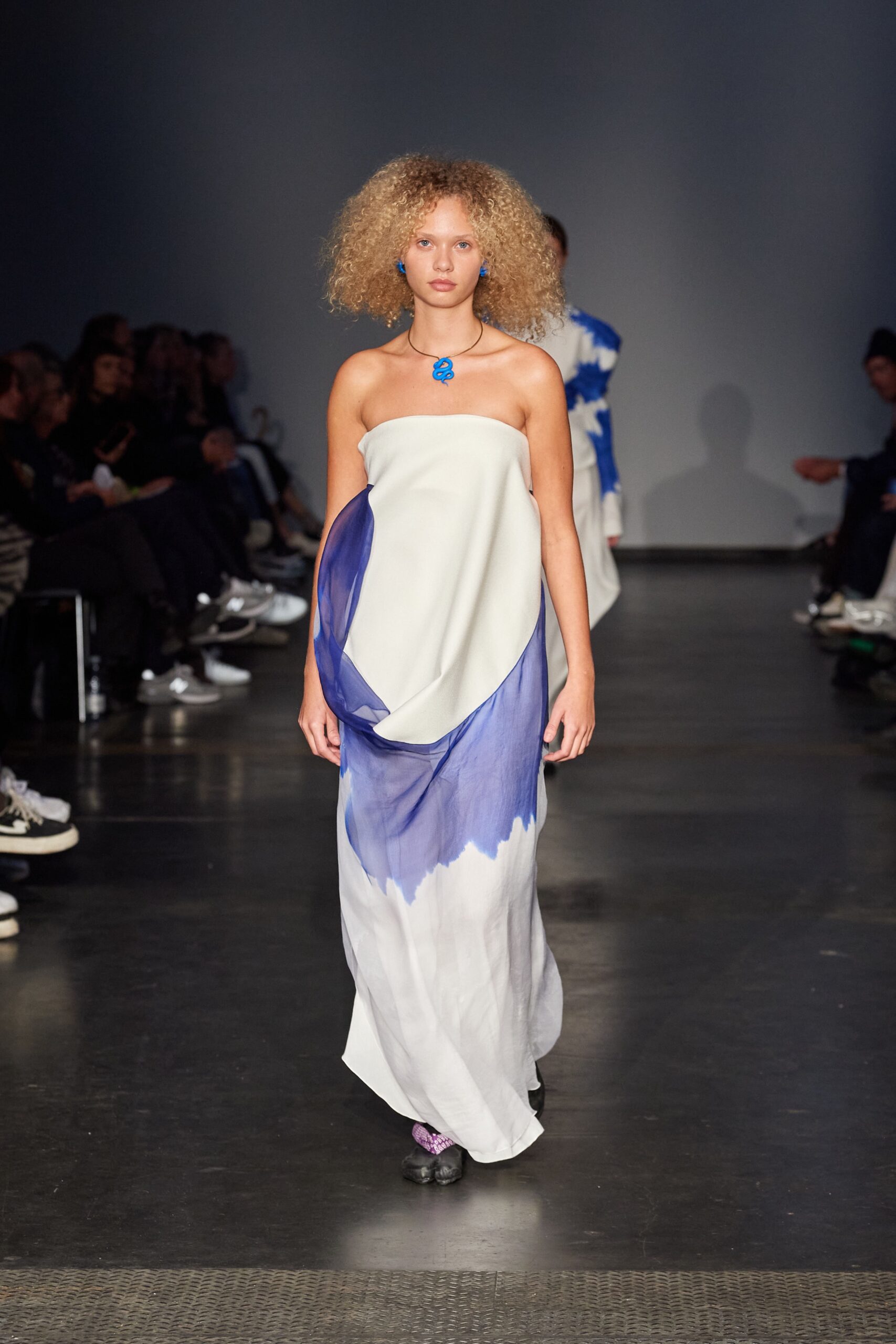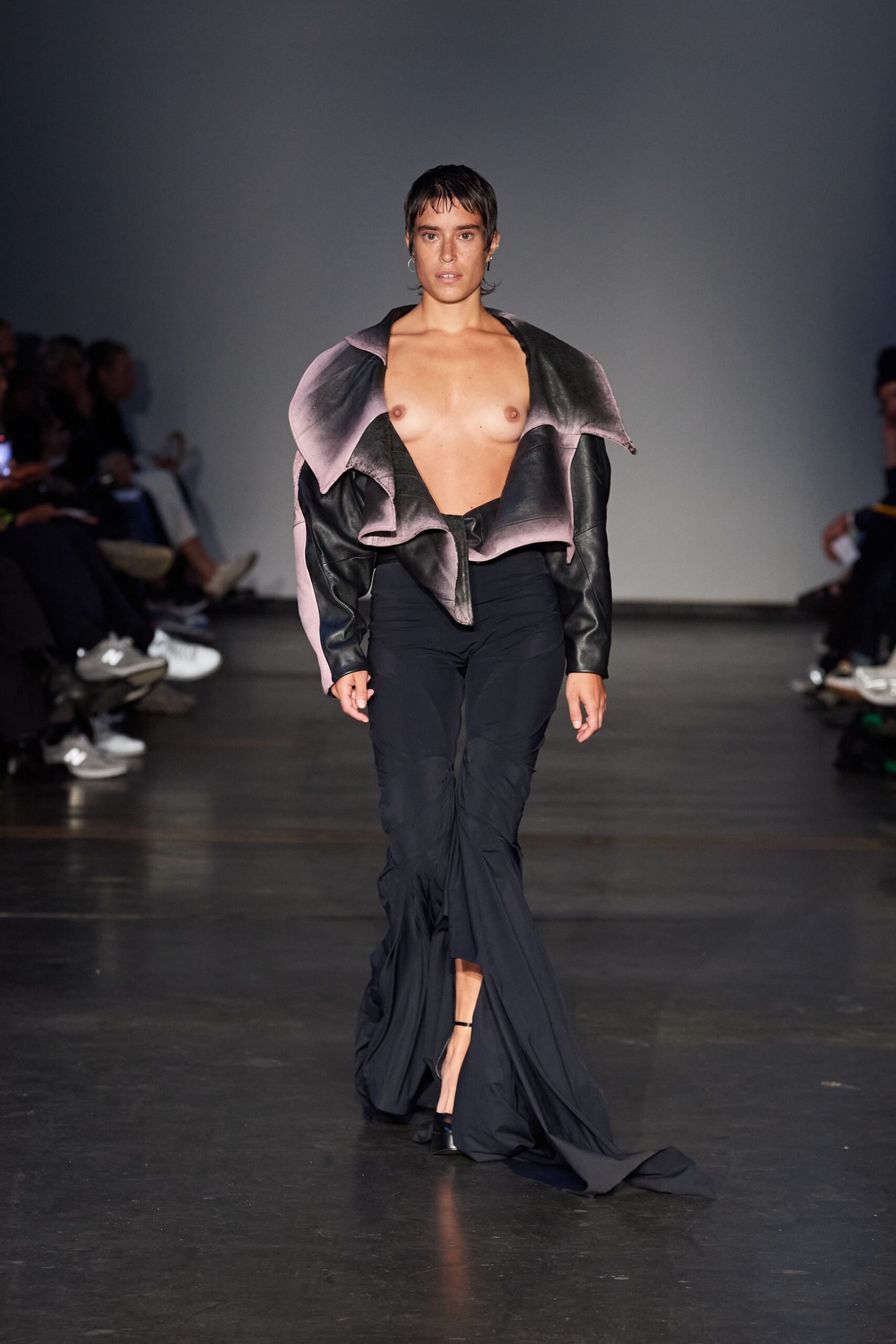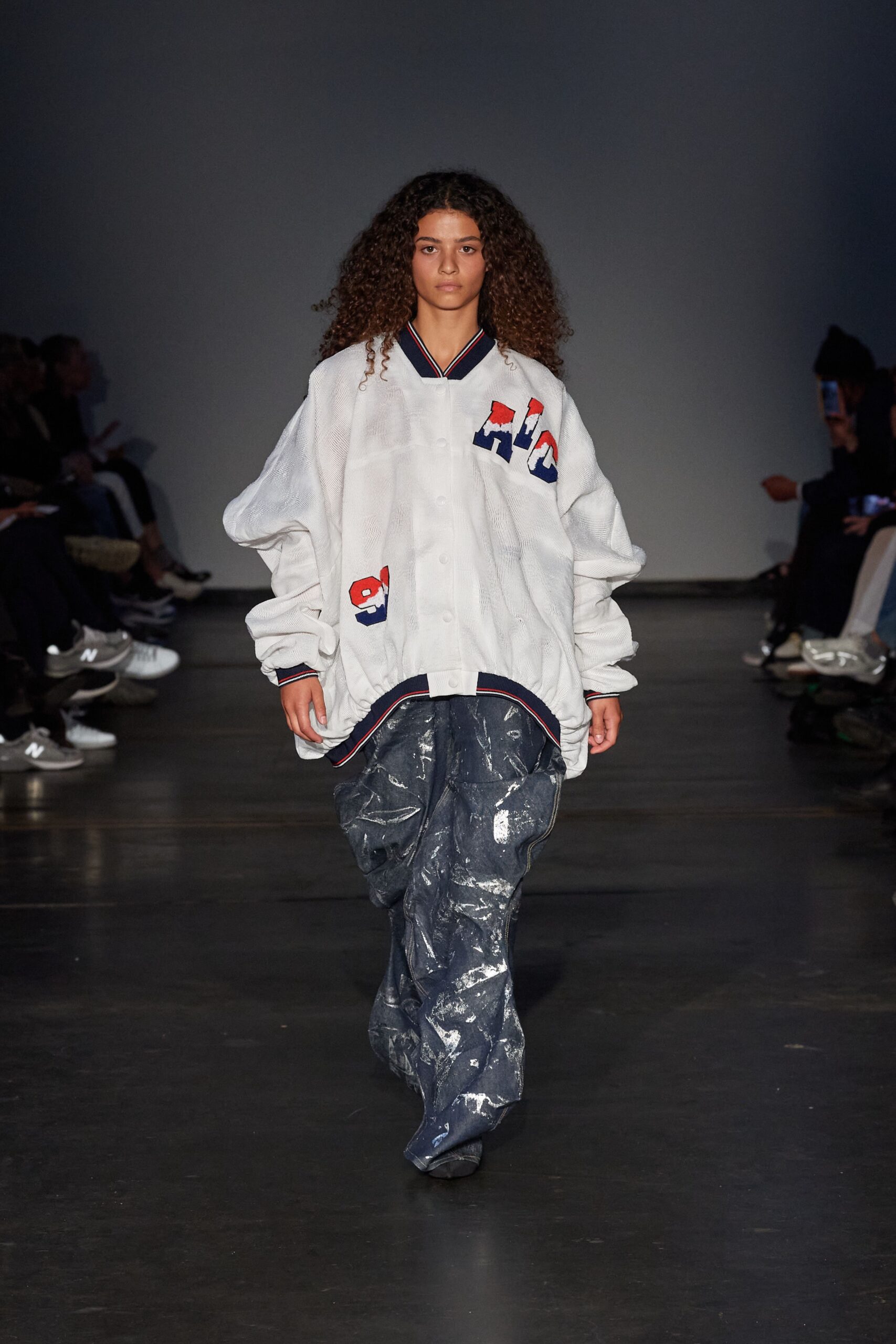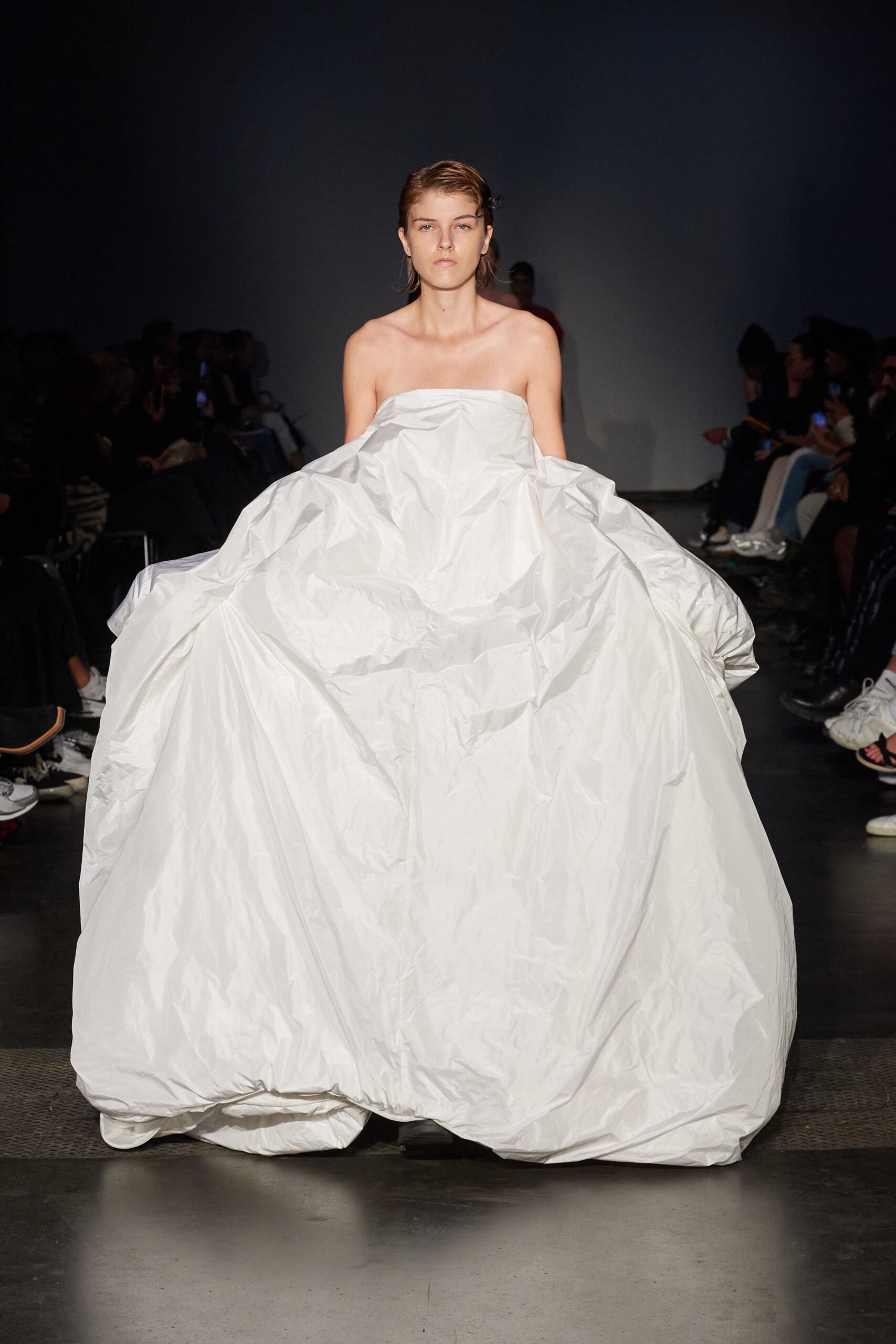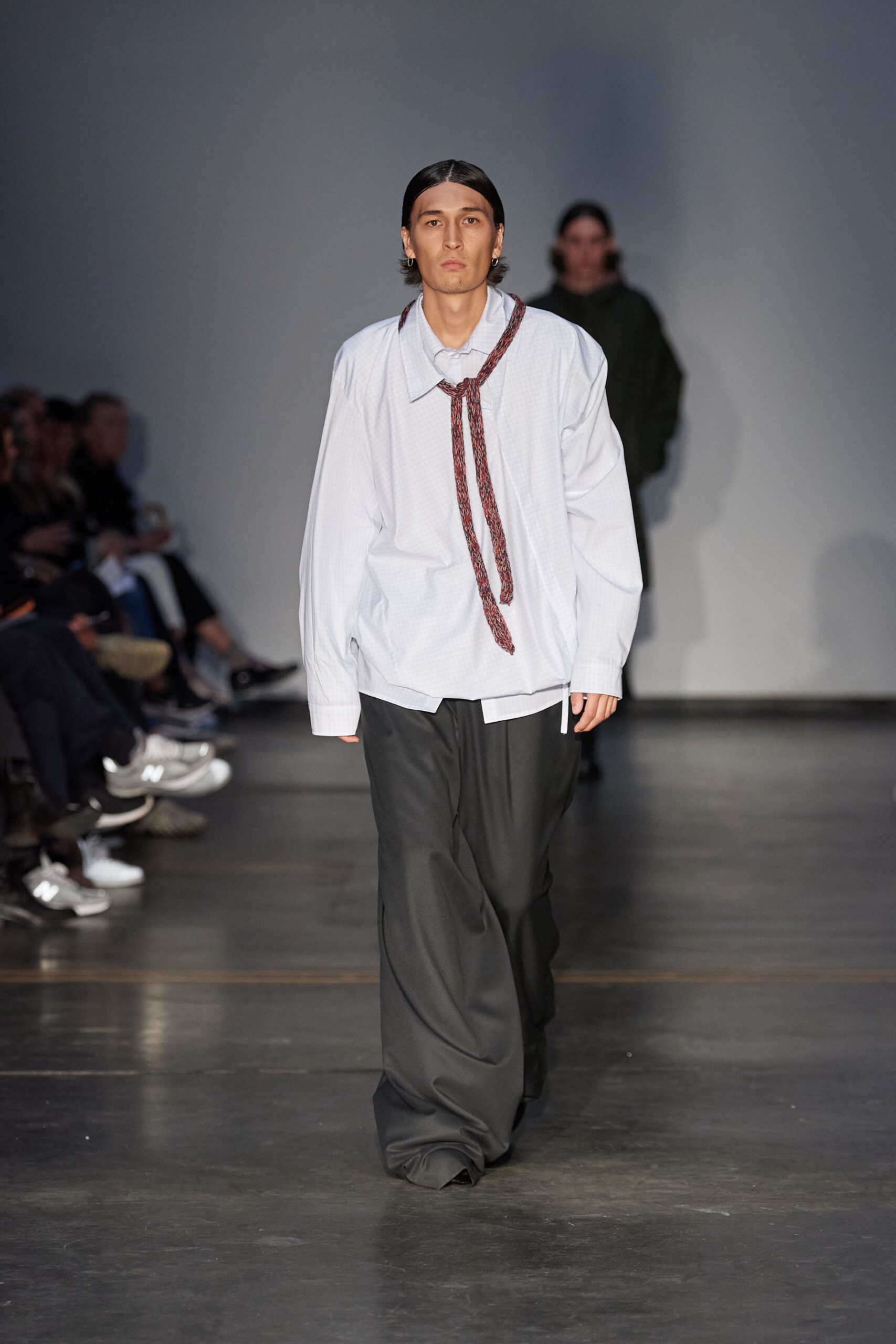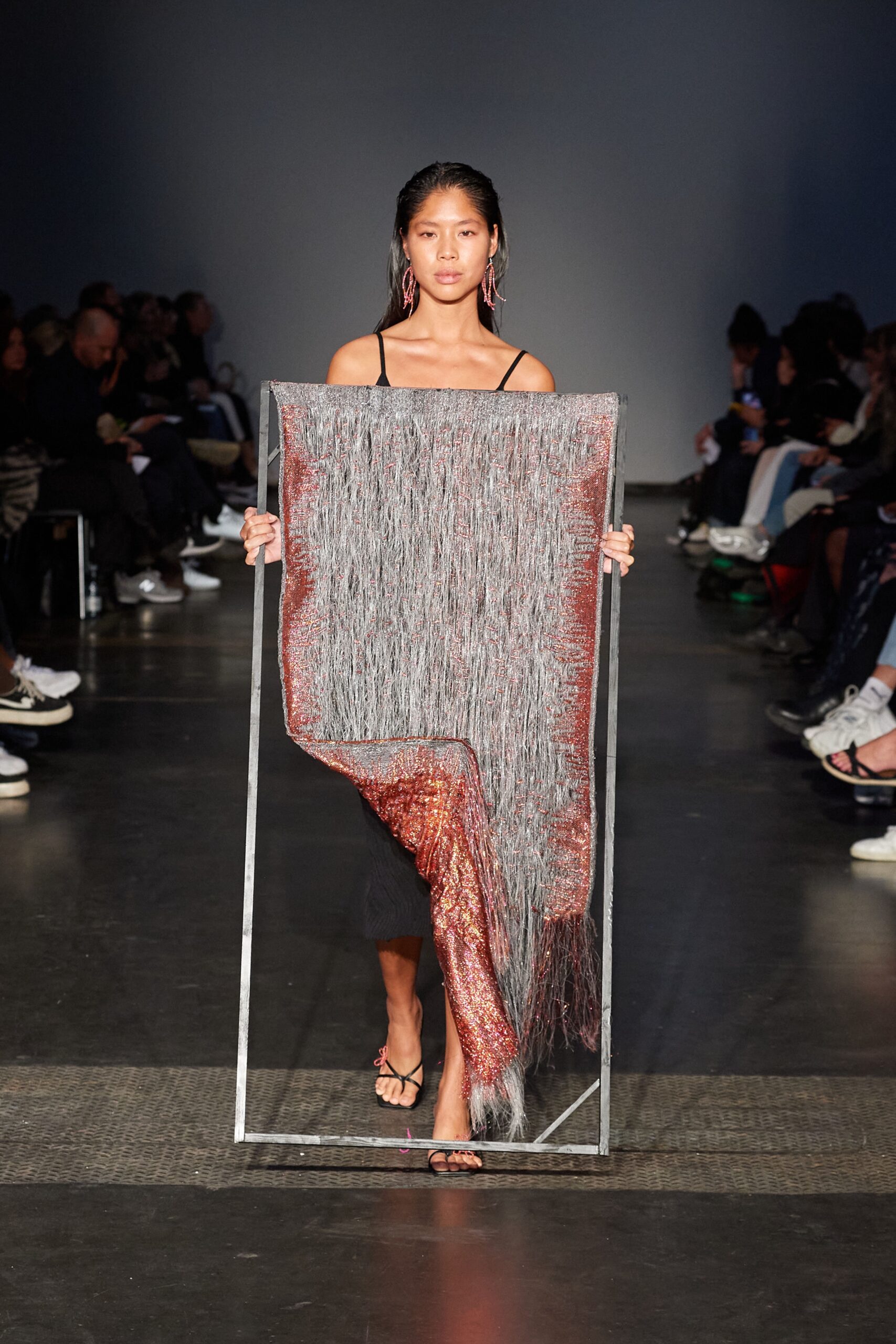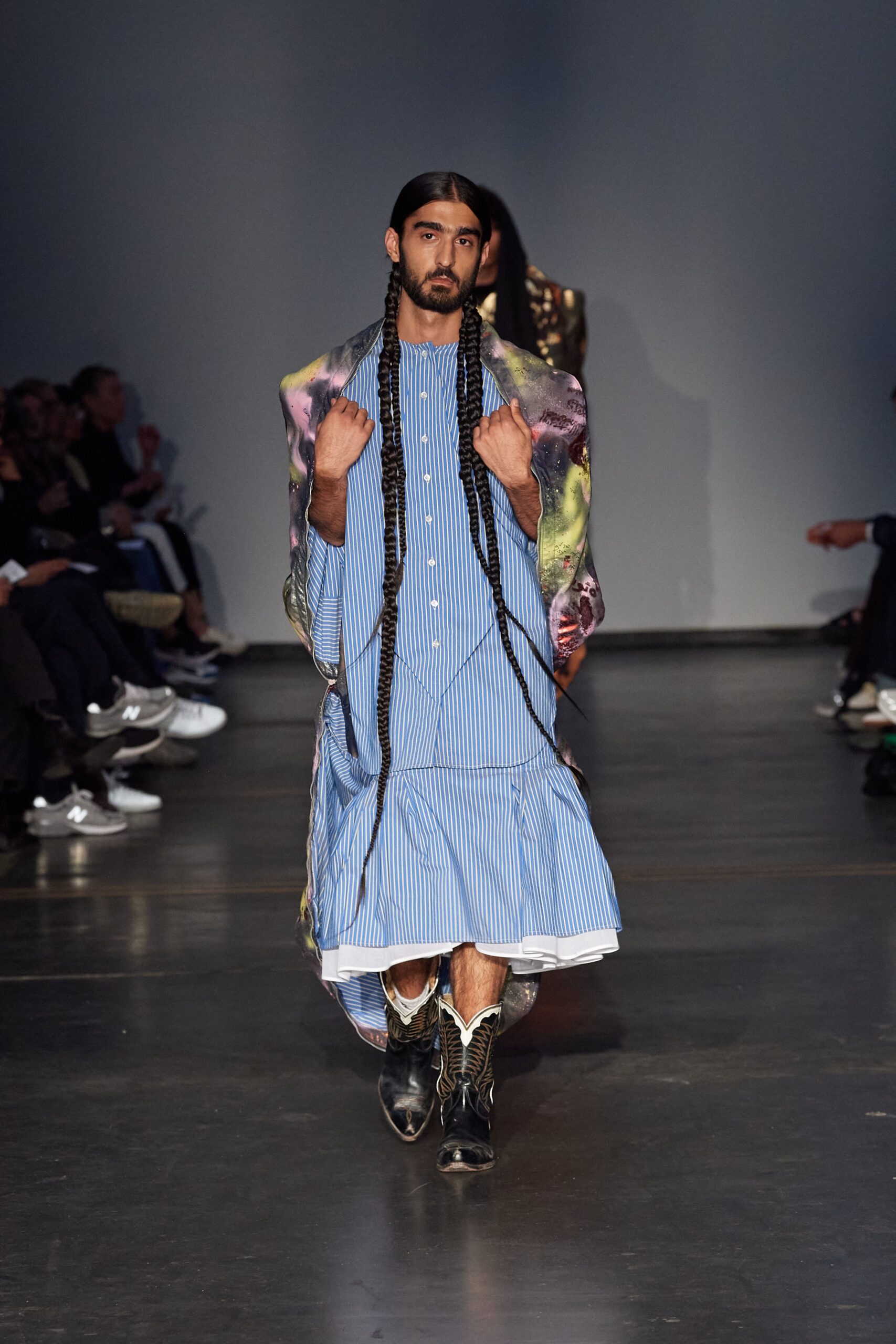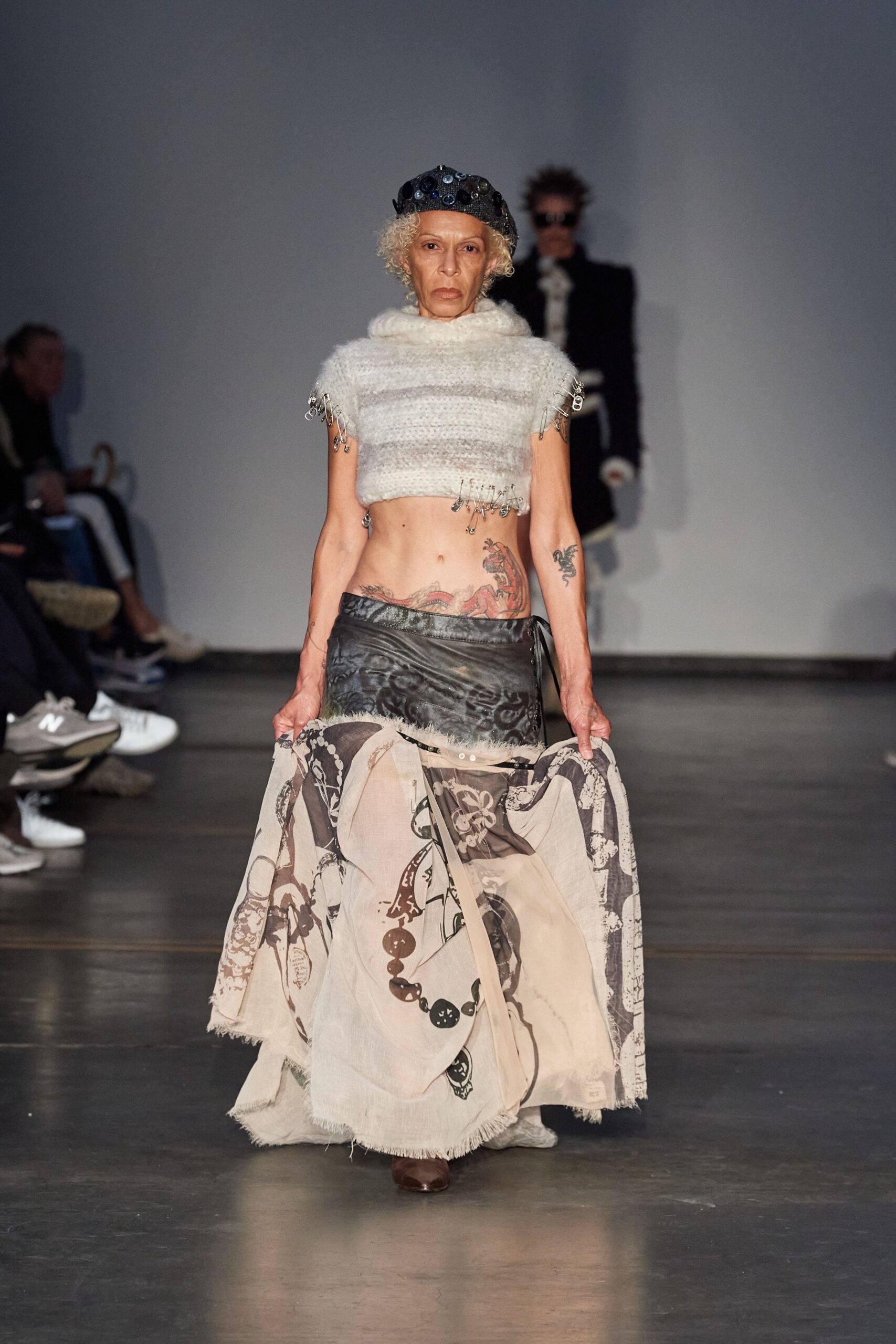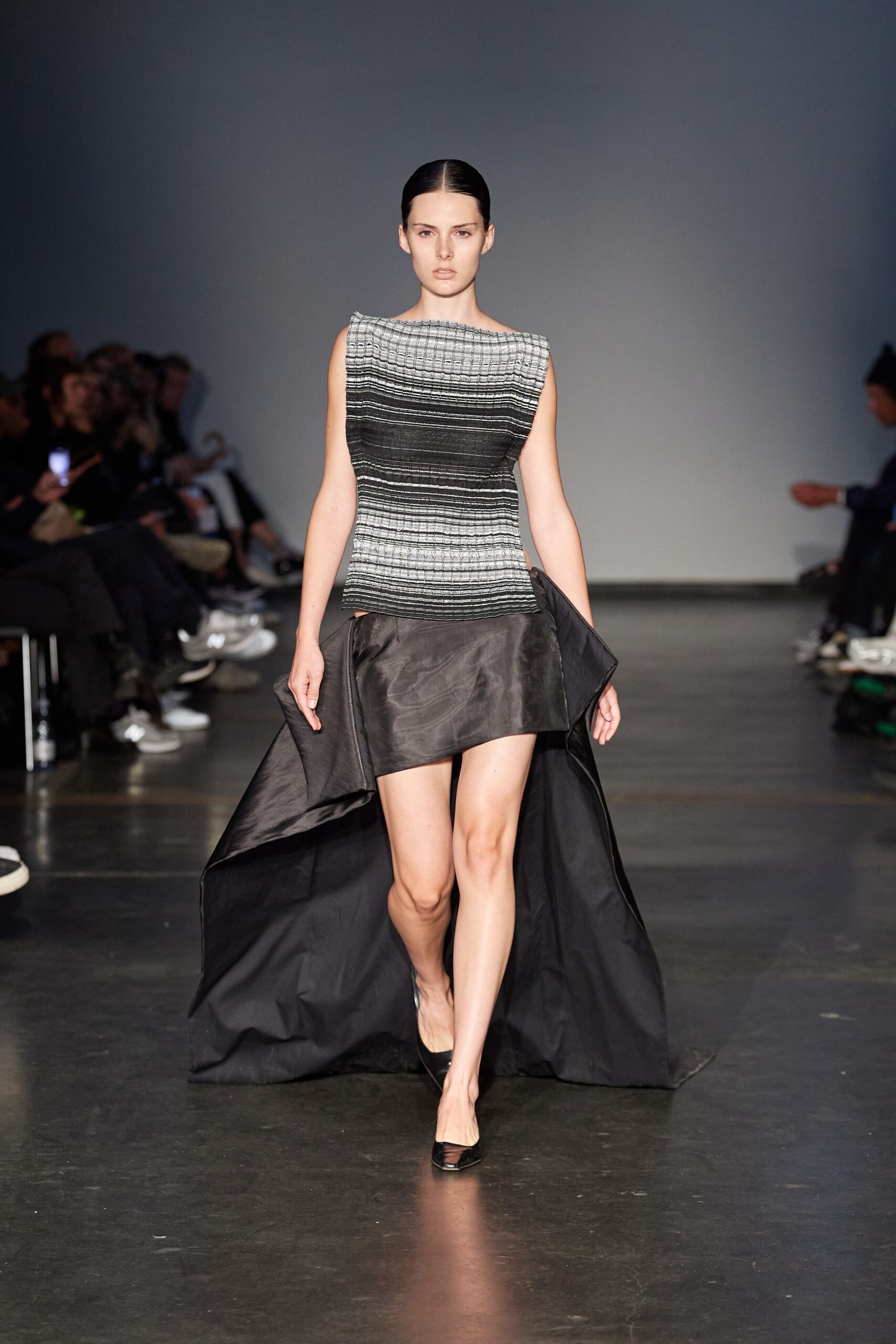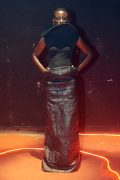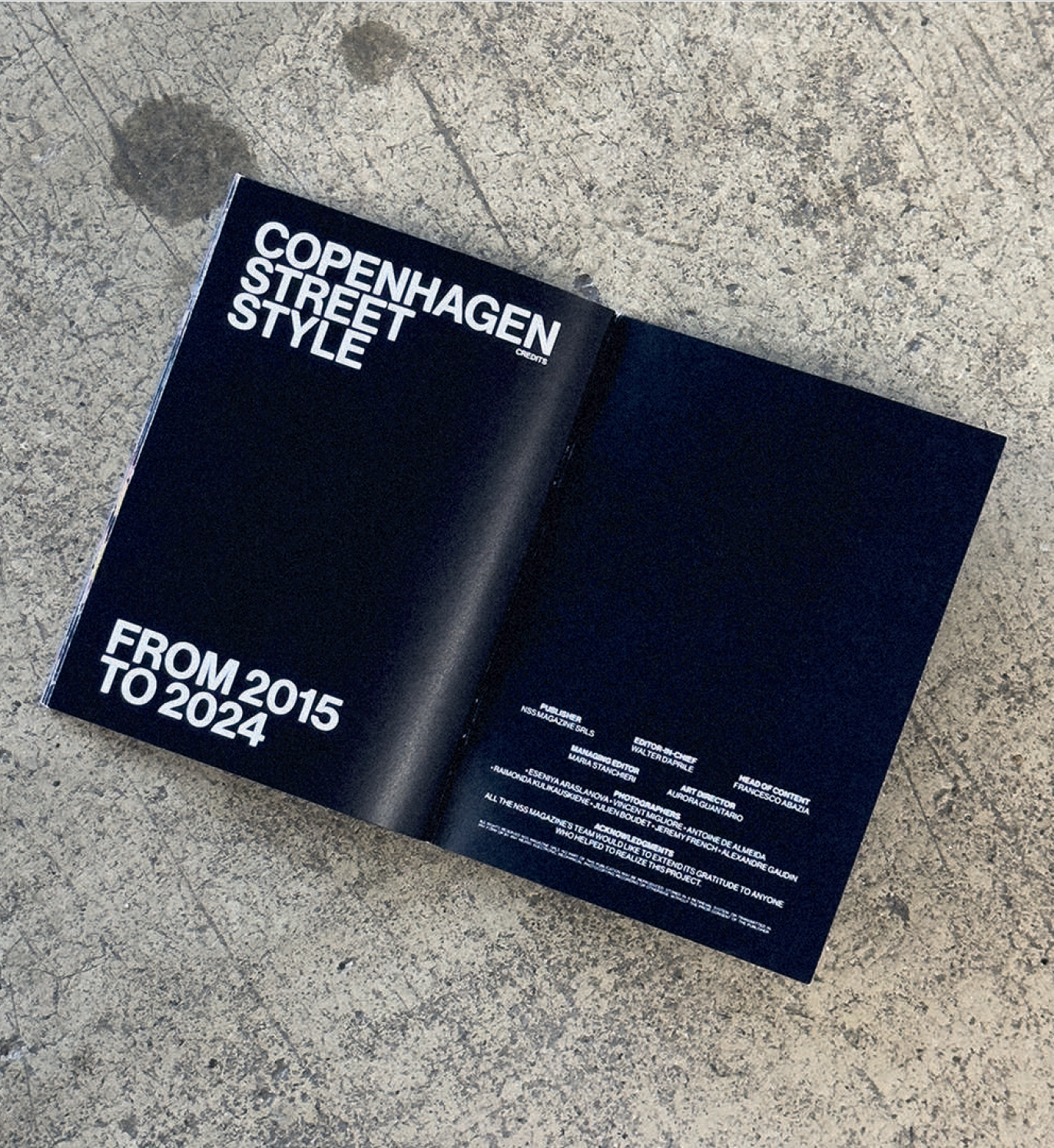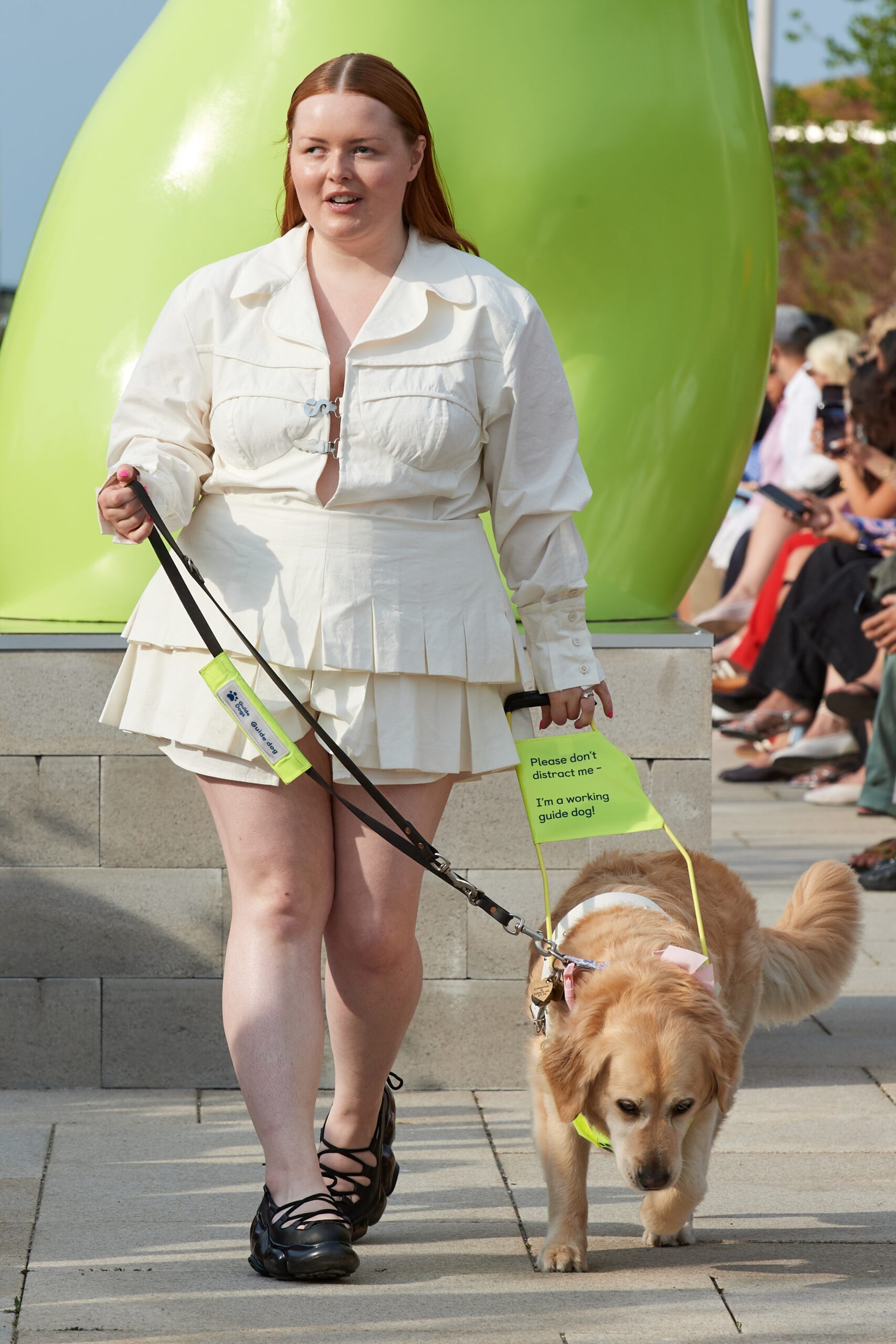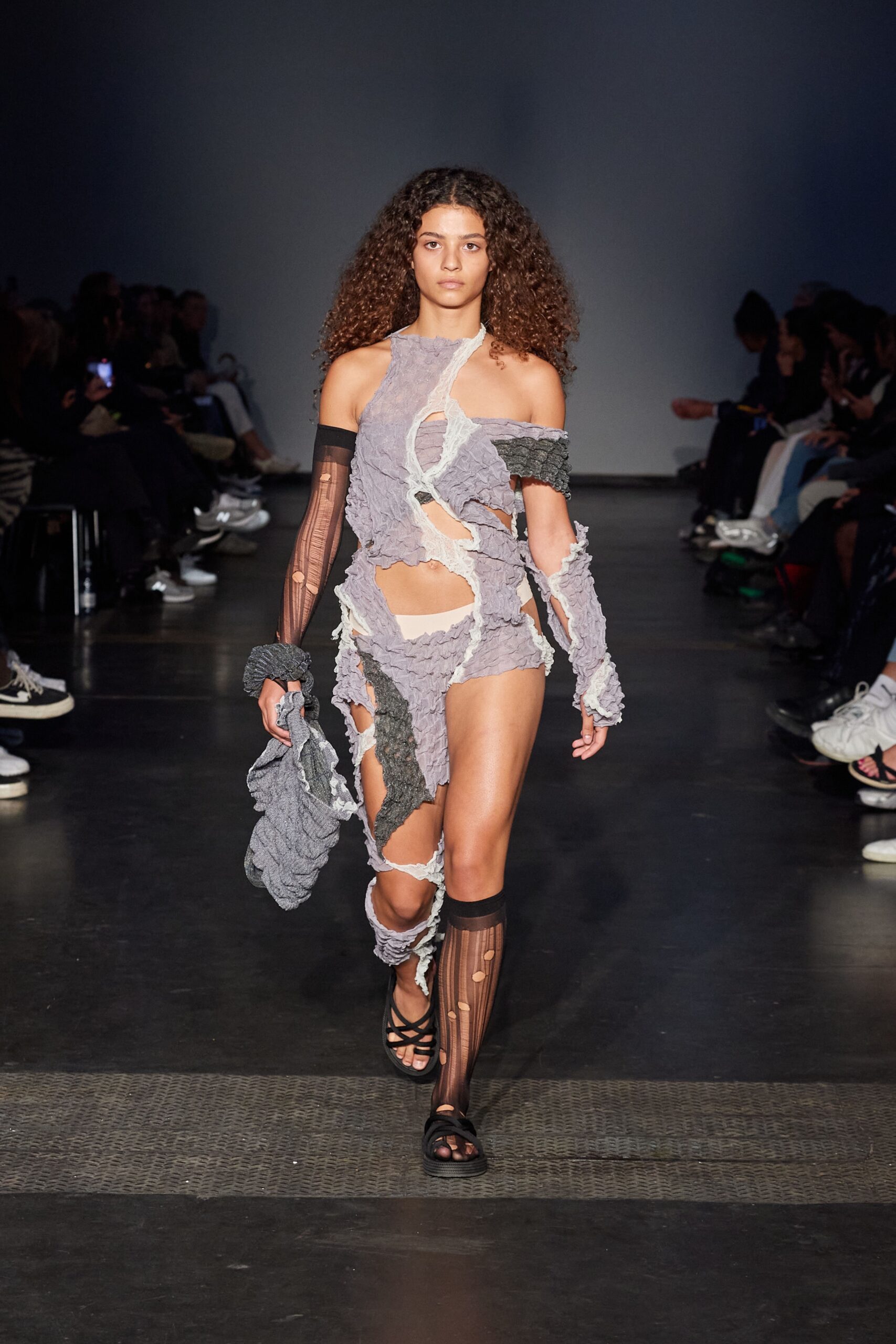
Top grade graduate collections look to a new fashion landscape
The newest team of fully trained designers from the Royal Danish Academy showed eleven collections that were less school project and more ready for real life.LÆS DEN DANSKE UDGAVE HER
The Royal Danish Academy, Thursday 10. August 2023 at 13.00, Vester Voldgade 33, 1785 Copenhagen
It is a discipline in itself to have to review a school show. Because, in reality, we are talking about eleven designers’ individual mini-collections, which do not necessarily have anything to do with each other. At this year’s graduation show from the Royal Academy, however, they had tried to create a common theme for the year, named ‘Panopticon’. Panopticon comes from the Greek words ‘pan’, meaning to include all, and ‘opticon’, meaning ‘place where you can see everything’. But when the theme is basically ‘everything’ well then again, it’s like the common thread can be hard to find anyway.
But if, on the other hand, you look at each individual designer’s graduation collection, their common threads are easy to spot. They had all been good at sticking to a theme, a clear inspiration. And it actually seemed that many of the newly hatched designers had started with the fabric, because several of them more or less stuck to the same material throughout all styles – probably not by chance, since knowledge and understanding of materials is an essential part of the education they have just completed.
This was the case, for example, with Alberte Fischer, who in her collection had stuck to taffeta and explored how this could be used to create volume and shapes. It worked particularly well in her first look, where a narrow, form-fitting dress seen from the back was given life by two fluttering side pieces that could almost stand on their own.
Forms were also there at Tilde Herold, who went all in on down-filled silk taffeta. The first look was – somewhat atypically – the bride, who was perhaps closer to being the bride the morning after, when she had wrapped herself in something like five crisp, white eiderdown duvets that formed a huge cloud from the chest down. Soft, clean and wildly cool. In another look, a bomber jacket had become the skirt of a prom dress with a tight fitted bodice.
At Sofie Axters, leather was the focus of two styles: a jacket with a large, bat-like collar and a set with a corsage and a long, tight skirt with slits at the sides. Both the jacket and the skirt were bleached along the seams, so they were given a rose-red colour which was repeated in the loose flowing silk dress in deep back and a glimpse of the model’s G-string.
We also saw fluidity and fluttering in Xiu Zhang’s collection in a short dress with many, many sewn-on small waves of chiffon, which moved in time with the model’s steps and were reminiscent of the sea. Very nice. Xiu Zhang had also explored machine knitting, where several styles were reminiscent of A. Roege Hove in the material but were completely his own in form. It was more of a patchwork of patterns and techniques, which were tied crisscrossing the models’ bodies into a dress or type of pantsuit.
At Mai Kaminaga, all looks were kept to white and blue, especially on the white silk, which was painted with large, royal blue strokes and was used for many styles. Here the cut was played with, so that large puffs gave shape to the otherwise simple silhouettes and made something familiar but new and exciting. It worked particularly well on a long skirt with large ‘bubbles’ on either side of the hips and on a long dress, where a pouch that sloped from the chest down towards the right hip gave something airy and careless to the otherwise formal look.
In addition to the featured designers, we also saw strong collections from Andreas Hermann Bloch, Sophie Linnemann, Raquel Lancheros Garzon, Sarkis Dersahakian, Andrea Ashworth and Shengnan Huang.
In general, the clothes and collections looked beautifully finished by all eleven design debutantes. Normally you can expect something more wacky and debauched from a design school show, but not this time. These new designers are ready to make clothes that will live and be used and loved. Perhaps it is because they are the first team on the new master’s program ‘Fashion, Clothing & Textiles – New Landscapes for Change’, where the focus is on developing a sustainable approach to fashion, which stems from user research and is hand in hand with consumers’ needs and wishes. In any case, it seems that they have learned what they should and are now ready to push the boundaries of what fashion should and should be able to do.
See a selection of the show looks below and see the entire collection here.
This show review is translated from Danish to English by Graham Addinal.
